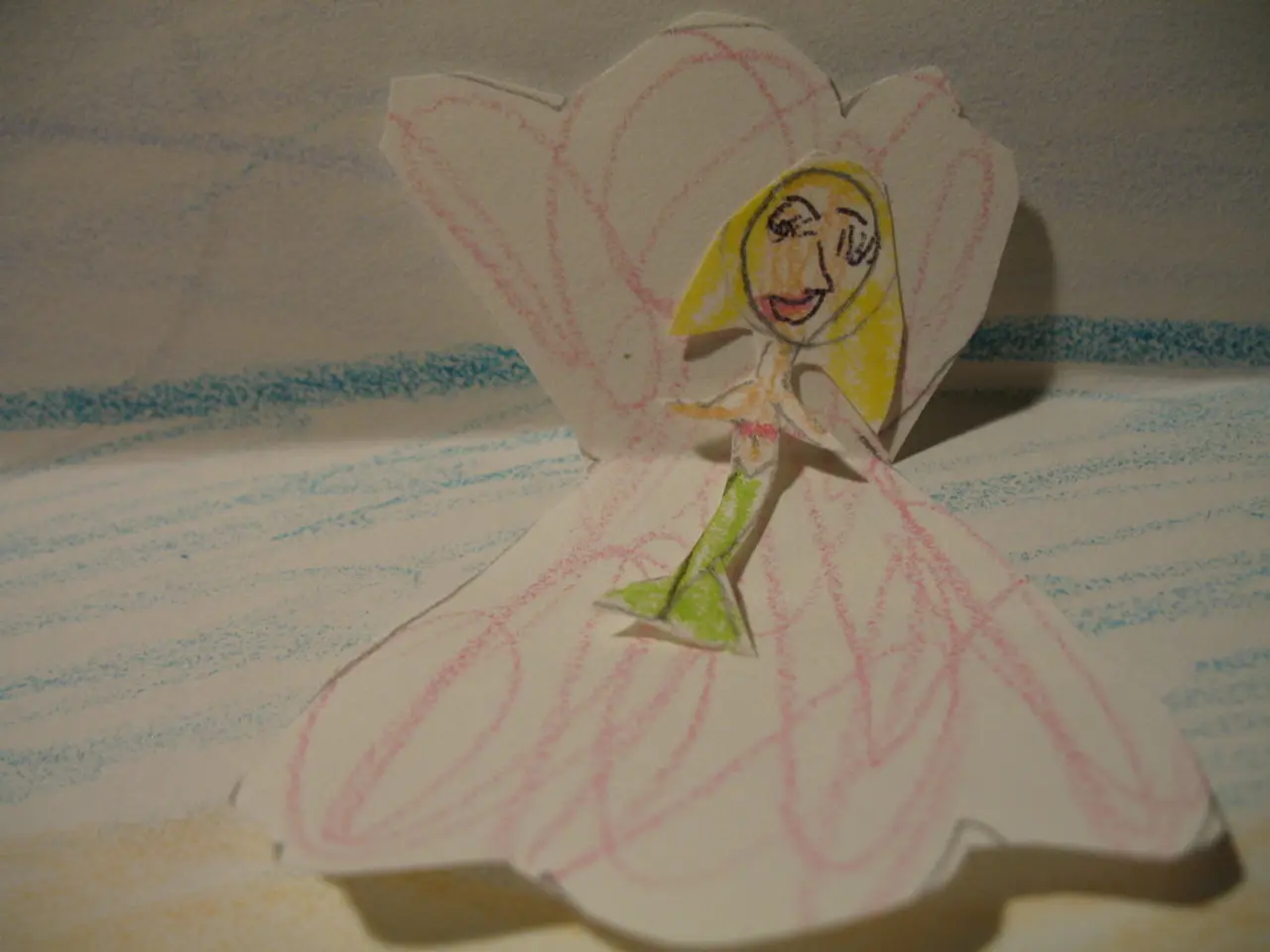Seven Creative Strategies for Combining Music and Art Instruction in Schools to Ignite Curiosity and Engagement
In an innovative approach to education, schools are blending music and art to create engaging, immersive learning experiences that boost student engagement, retention, and test scores.
One key element of these programs is the inclusion of audio recordings of musical compositions paired with photographs of corresponding visual artworks in portfolios. This method allows students to document their creative process and showcase their work in a comprehensive manner.
Professional artists guide collaborative projects where students design album covers for local bands and learn music production techniques. These projects not only foster creativity but also provide real-world applications of the skills learned.
Encouraging students to document their creative process through sketches, musical notation, and reflection journals helps in understanding the nuanced growth that happens when students blend musical and artistic skills. This documentation also serves as a valuable resource for self-assessment and peer review.
Collaboration skills are rated when students work in mixed-media groups. These sessions not only assess their ability to work together but also provide opportunities for students to learn from each other and explain their artistic choices across both mediums.
Artist residencies in schools bring professional expertise and foster mentor relationships for students. These residencies often lead to students creating outdoor percussion installations using recycled materials combined with painted panels showing the creative process.
Facilitating monthly collaboration sessions where teachers can co-plan integrated units, observe each other's classes, and reflect on student outcomes together, helps in establishing professional learning communities. These communities connect educators across disciplines through regular meetings, online forums, and shared resource libraries.
To foster critical thinking skills, peer review and self-reflection practices are implemented. These practices provide structured feedback sessions and personal evaluation exercises, helping students to evaluate their own growth in rhythm, melody, color usage, and creative problem-solving.
Creative synthesis is evaluated in rubrics, with categories that assess how effectively students connect musical concepts with visual expression. Separate criteria for musical elements like rhythm and melody alongside visual components such as color theory and composition are included in these rubrics.
Multi-dimensional scoring guides (rubrics) address both artistic mediums simultaneously for integrated arts projects. These guides ensure a comprehensive assessment of student work.
Public installations establish permanent showcases of student creativity while serving community needs. These installations not only showcase student work but also contribute to the community.
Cross-disciplinary training workshops bring together music teachers, art instructors, and classroom educators for collaborative learning experiences. These workshops help in implementing sustainable arts integration that leads to improvements in academic measures and attendance.
Mentorship programs between arts and academic educators pair experienced arts specialists with classroom teachers new to integration practices. This partnership helps in sharing expertise and fostering a supportive learning environment.
In addition, interactive sculptures that produce musical tones when touched or activated by weather conditions, and mosaic murals incorporating QR codes that link to student-composed soundtracks explaining the artwork's significance, add an element of fun and creativity to learning.
Gallery walks where students present their integrated projects and receive constructive feedback from classmates on both musical and artistic elements, provide opportunities for students to showcase their work and learn from their peers.
Digital platforms where educators can share photos, videos, and documentation of successful arts integration projects for ongoing inspiration, help in creating a supportive and collaborative learning environment.
Finally, ongoing teacher coaching and professional development programs lead to higher student engagement and measurable academic improvements, especially in underperforming schools. Programs like the Kennedy Center’s CETA program highlight the importance of sustained instructional support rather than one-time training events.
By leveraging the unique strengths of music and art, these strategies deepen understanding, diversify approaches to new material, and foster a more inclusive and engaging learning environment, thus enhancing both retention and test scores across subjects.
[1] Catterall, J. S., Dumais, S. A., & Hampden-Thompson, G. (2012). The Arts and Achievement in At-Risk Youth: Findings from Four Longitudinal Studies. National Endowment for the Arts.
[2] Sloboda, J. A., & O'Neill, S. (2011). The Oxford Handbook of Music Psychology. Oxford University Press.
[3] Greene, J. S. (2011). Arts Education and Learning: The Evidence. Oxford Review of Education, 37(3), 279-298.
[4] Hicks, D. (2009). The Power of the Arts in Child Development. National Art Education Association.
[5] Catterall, J. S., Dumais, S. A., & Hampden-Thompson, G. (2012). The Arts and Achievement in At-Risk Youth: Findings from Four Longitudinal Studies. National Endowment for the Arts.
- To further enrich these innovative learning experiences, gadgets like smartphones and tablets can be used to capture and annotate the creative process, linking it to educational resources on topics such as education-and-self-development, personal-growth, career-development, or even entertainment.
- Incorporating technology into the classroom, students can experiment with music software for composition and music production, aiding them in the development of skills like learn, skills-training, and job-search, for future opportunities in the music industry.
- The inclusion of books such as biographies of famous artists or musical virtuosos can be valuable resources for students to develop a deeper understanding of the historical context and the impact of music and art on society.
- By integrating art, music, and technology, students can create multimedia presentations that demonstrate their understanding of specific curriculum topics, engaging their peers and teachers alike, enhancing test scores and retention.
- Furthermore, professional partnerships with local galleries, museums, and music studios can provide students with access to resources, mentors, and opportunities for internships or on-the-job training, thus boosting their overall education and personal growth.
- Lastly, desirable outcomes from these integrated learning experiences will be supported by ongoing research, with scholarly works like those by Catterall, Sloboda, Greene, Hicks, and other experts contributing valuable insights to the field, continuing the ongoing development and refinement of these unique, engaging, and effective education strategies.




